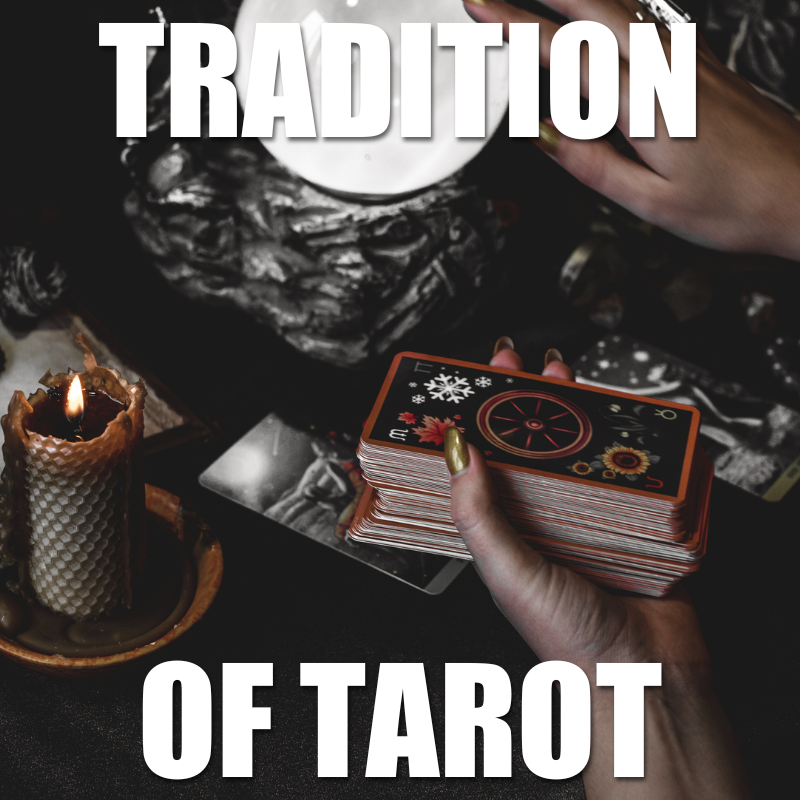Tradition of Tarot
Posted by Magickal Bear


Throughout history, we have made great efforts to contact the Divine to find our purpose, navigate our future, and work through issues of the past. We have used practices like praying and meditating to talk to the Gods and listen patiently for their guidance. We have also developed other tools to use as a means of communication and introspection throughout the years. Each of these methods and tools are influenced by the cultures they were founded in. Tarot is only one of the many divination systems that gained traction and became common in Western societies.
A Tarot deck traditionally consists of 78 cards. They are separated into sub-categories known as the Major and the Minor Arcana. Depending on the answers you are seeking you can use one category but it is most common to use them consecutively. The Major Arcana usually directs its focus towards major life events and lessons. This suit contains 22 cards.
The Major Arcana follows a storyline of sorts. It is often viewed as the journey of the Fool. This is the first card in this suit and it is labeled as card 0. In this story we, the querent, take the place of the Fool during this journey. The cards in Tarot all have pictures to help us interpret the meaning of the cards. As with time though, the meanings of some of the cards have slightly changed to fit in better with a modern society.
The Minor Arcana directs its focus towards our daily trials and tribulations. There are four suits in this sub-deck that resemble those of playing cards. These suits are usually called Cups, Pentacles, Swords, and Wands. In some decks though these names may vary slightly but should ultimately be relatively easy to decipher.
Each of the Minor Arcana suits represent an element. The Cups are representative of the water element and they are heavily associated with emotions. Cups mostly resemble that of the hearts suit in playing cards. The Pentacles suit represents the Earth and has a very grounded nature that often ties into the physical world. These are things that you can feel, which correlates to the suit of diamonds in playing cards. Wands are representative of the element of fire and carry a fiery passion with them, they are most similar to the suit of clubs in playing cards. Swords are related to the element of air as they represent thoughts. They are the most similar suit to the spades in playing cards.
Each of these minor suits contain 14 cards. Ten of the cards are labeled from ace to ten, just like playing cards. Each suit also has four court cards referred to as the Page, Knight, Queen, and King. This leaves us with one more card than in traditional playing cards.
Today there are hundreds of different decks, created by all sorts of different writers and artists. Most of these decks follow one of three major traditions. These are the Tarot of Marseilles from the 15th century, the Rider-Waite-Smith, and Thoth Tarot. The Rider-Waite-Smith or RWS deck is the most popular Tarot deck and is the one commonly used in Tarot books. The RWS was designed by Pamela “Pixie” Coleman Smith. This one was produced in 1909.
Many of today's decks follow the design of the RWS although the art can be vastly different. The biggest change that this deck brought to Tarot cards was the illustrations on the Minor Arcana cards numbered ace to ten. This was because instead of the illustration being a simple design, take the 2 of wands for example, instead of just being 2 wands, there is a man standing with the wands looking out over a vast field representing the abundance and opportunity in his hands. This is beneficial because we can spend less of our time learning the possible meanings of the cards and just get a clearer idea of what they are trying to represent by simply seeing what is in front of us.
Alastair Crowley was the one to design the Thoth deck that was published in 1969 and was illustrated by Lady Freida Harris. The main difference between the Thoth deck and RWS deck is that some of the Major Arcana's had different names and numbers. What was known as Strength in the RWS deck translated to Lust in the Thoth deck and the Page and Knights were replaced with Princesses and Princes. The Thoth deck is also much more vibrant than the RWS deck.
When you are seeking a deck it is important to choose one that calls to you. This will allow you to develop a connection easier which will help you connect to Gods, higher powers, your future, and your past. As you continue to practice with a variety of decks, one will speak to you more clearly than the others. Follow your intuition as you develop your own relationship and tradition with Tarot!

